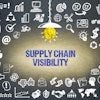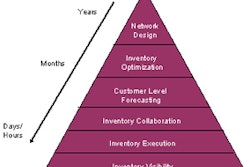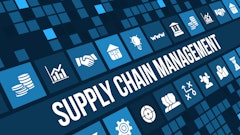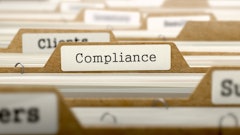By Andrew K. Reese
AMR Research released a report late last year that suggested that China contributes the greatest risk to global supply chains. Respondents to an AMR survey pegged China as the top region contributing to various supply chain risks, including intellectual property infringement, supplier and internal product quality failure, and security breaches
But perhaps supply chain executives should look a bit closer to home for the risks that threaten their operations. For while many enterprises have invested in sophisticated supply and demand planning solutions to better manage their supply chains, they may be overlooking the risks inherent in those very solutions, according to the results of a survey of 90 large enterprises conducted last year by this magazine in conjunction with supply chain consultancy Bristlecone.
The problem is that companies have not necessarily invested in the talent they need to ensure that the statistical modeling and optimization algorithms embedded in their planning systems are updated regularly to reflect current market conditions. As a result, the forecast accuracy of those planning systems declines over time and the recommended courses of action become increasingly divorced from reality, creating “inherent risk” in the supply chain.
Not that supply chain executives aren’t aware of this risk. In fact, more than three-quarters (77 percent) of the survey respondents noted that their own company’s information systems pose a high or medium risk. However, companies seem to view this “hidden risk” as more of a long-term issue, and they are choosing to prioritize more immediate-term threats to their supply chains, such as potential supplier failure or material cost volatility – understandable, given the current turbulence in the economy.
You can read the full survey report at www.SDCExec.com/hiddenrisks, but the “best practice” recommendations that emerged from the study are worth repeating here:
- Assess which of your supply chain systems are subject to potential risk from faulty models, outdated algorithms or bad data.
- Identify the sources of that risk (the models, algorithms and data in question), the potential implications or degree of severity of the risk, as well as opportunities for updating the systems to alleviate the risk.
- Evaluate your requirements for internal resources capable of performing the necessary system updates at an adequate frequency, and compare those requirements to available resources within your organization.
- Explore opportunities to involve external resources where possible to assess risk and provide services for mitigating the risk.
- Develop a plan that provides for sufficient internal and external resources to mitigate the risk over time and on an ongoing basis moving forward.
The initial steps to identify the sources of risk can be done quickly and at little or no cost, and, if nothing else, you will at least have the comfort of understanding your vulnerabilities. You will also be in a position to judge whether actual investments are warranted to address this challenge. To quote John F. Kennedy, “There are risks and costs to a program of action. But they are far less than the long-range risks and costs of comfortable inaction.”
Speaking of China, The Atlantic magazine has produced a DVD series on the Middle Kingdom that provides an insider’s look at how business gets done in one of the most fast-paced economies on the planet. “On the Frontlines: Doing Business in China” is co-hosted by James Fallows, the long-time Atlantic correspondent who has been living in, and reporting from, China for the past three years. The $199 price tag may seem high for the five-DVD set, but that’s a fraction of the cost of a plane ticket to Beijing, and the insights from companies like Pizza Hut and Starbucks that have found success in China may prove invaluable if you find your own company venturing into this complex market. Check it out at www.chinadoingbusiness.com or on Amazon.
In the meantime, as always, you can write me with your thoughts at [email protected]. I’ll look forward to hearing from you.









![Pros To Know 2026 [color]](https://img.sdcexec.com/mindful/acbm/workspaces/default/uploads/2025/08/prostoknow-2026-color.mduFvhpgMk.png?ar=16%3A9&auto=format%2Ccompress&bg=fff&fill-color=fff&fit=fill&h=135&q=70&w=240)








